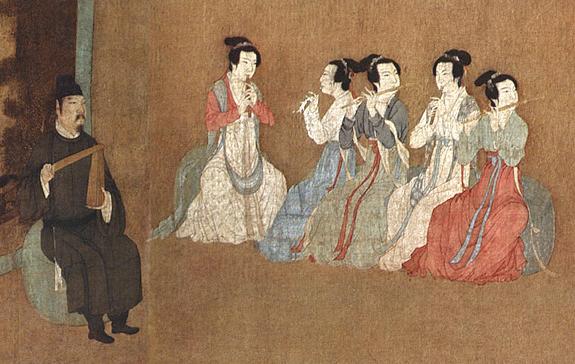
Hanfu has a history of more than three millennia, and is said to have been worn by the legendary Yellow Emperor. From the beginning of its history, Hanfu (especially in elite circles) was inseparable from silk, supposedly discovered by the Yellow Emperor’s consort, Leizu. The Shang Dynasty (c.1600 BC-1000 BC), developed the rudiments of Hanfu; it consisted of a yi, a narrow-cuffed, knee-length tunic tied with a sash, and a narrow, ankle-length skirt, called chang, worn with a bixi, a length of fabric that reached the knees. Vivid primary colors and green were used, due to the degree of technology at the time.
The dynasty to follow the Shang, the Western Zhou Dynasty, established a strict hierarchical society that used clothing as a status meridian, and inevitably, the height of one’s rank influenced the ornateness of a costume. Such markers included the length of a skirt, the wideness of a sleeve and the degree of ornamentation. In addition to these class-oriented developments, the Hanfu became looser, with the introduction of wide sleeves and jade decorations hung from the sash which served to keep the yi closed. The yi was essentially wrapped over, in a style known as jiaoling youren, or wrapping the right side over before the left, because of the initially greater challenge to the right-handed wearer (the Chinese discouraged left-handedness like many other historical cultures, considering it unnatural, barbarian, uncivilized and unfortunate).
In the Eastern Zhou Dynasty, the "deep robe" (shenyi) appeared a combination of tunic and skirt. The upper and lower halves were cut separately but sewn as a single unit. An additional change was the shaping of the left side of the costume into a corner, fastened on the chest. Perhaps because of Confucian influence, disapproving of a hierarchical society in favour of social mobility based on personal merit, the shenyi was swiftly adopted. There still existed an elite however, and they monopolised the more ornate fabrics and grandiose details.



